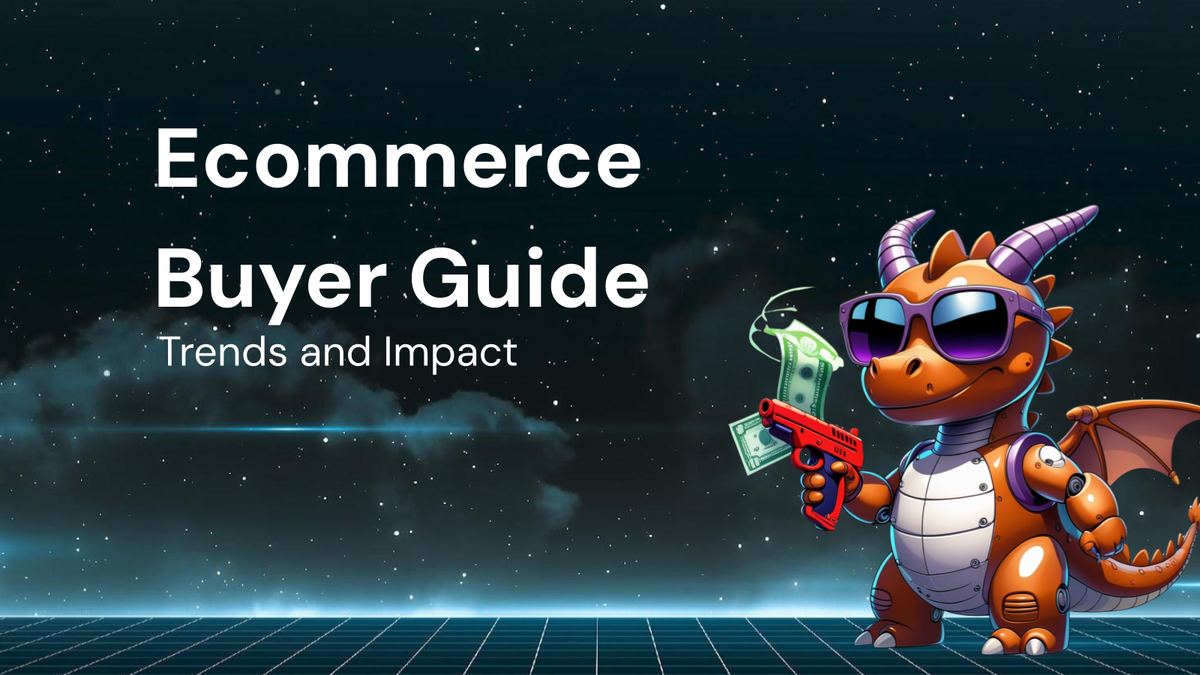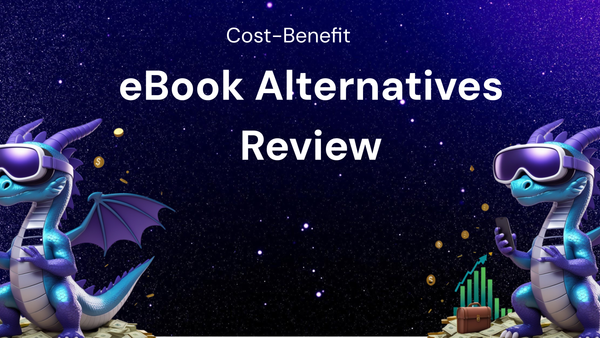Guide: How Ecommerce Trends Impact Buyer Behavior

Guide: How Ecommerce Trends Impact Buyer Behavior
The ever-evolving landscape of e-commerce is in constant flux, driven by technological advancements, shifting consumer expectations, and the relentless pursuit of a seamless online shopping experience. These changes aren't just superficial tweaks to website design; they fundamentally impact buyer behavior, reshaping how customers discover, research, evaluate, and ultimately purchase products online. Understanding how these e-commerce trends influence buyer behavior is crucial for businesses seeking to stay competitive, attract customers, and cultivate lasting brand loyalty.
This guide explores the most significant e-commerce trends shaping buyer behavior, offering actionable insights into how businesses can adapt and thrive in this dynamic environment.
I. Personalization: The Age of Tailored Experiences
- The Trend: Personalization is no longer a "nice-to-have" but a core expectation. Consumers crave tailored experiences that anticipate their needs, preferences, and purchase history. This extends beyond simply addressing them by name in an email; it encompasses personalized product recommendations, targeted marketing campaigns, and customized website content.
- Impact on Buyer Behavior:
- Increased Engagement: Personalized experiences capture attention and foster a sense of connection, leading to higher engagement rates and longer time spent on site. Customers are more likely to explore products that resonate with their individual tastes.
- Higher Conversion Rates: When customers feel understood and see products relevant to their needs, they are more likely to make a purchase. Personalized product recommendations significantly contribute to upselling and cross-selling opportunities.
- Improved Customer Loyalty: Personalization demonstrates that a brand values its customers as individuals, fostering a sense of loyalty and encouraging repeat purchases. It creates a more positive and memorable shopping experience.
- Actionable Insights:
- Data Collection and Analysis: Invest in robust data collection tools to gather insights into customer demographics, browsing history, purchase patterns, and preferences. Utilize data analytics platforms to identify trends and segment your audience.
- Personalized Product Recommendations: Implement recommendation engines that suggest products based on past purchases, browsing behavior, and similar customer profiles.
- Dynamic Content Personalization: Customize website content, including product descriptions, banners, and promotional offers, based on individual customer attributes.
- Personalized Email Marketing: Segment your email list and send targeted messages with personalized product recommendations, exclusive offers, and relevant content.
- Personalized Customer Service: Train customer service representatives to provide personalized support based on customer history and preferences.
II. Mobile Commerce: The Dominance of Smartphones
- The Trend: Mobile commerce, or m-commerce, refers to online shopping through smartphones and tablets. With the proliferation of smartphones and increasing internet accessibility, mobile devices have become the primary means of accessing the internet for many consumers.
- Impact on Buyer Behavior:
- Convenience and Accessibility: Mobile commerce offers unparalleled convenience, allowing customers to shop anytime, anywhere. This spontaneity drives impulse purchases and reduces friction in the buying process.
- Shorter Attention Spans: Mobile users often browse in short bursts, requiring websites to be optimized for quick loading times, clear navigation, and concise information.
- Location-Based Marketing: Mobile devices enable location-based marketing, allowing businesses to target customers with relevant offers and promotions based on their geographic location.
- Social Commerce Integration: Mobile devices facilitate seamless integration with social media platforms, enabling customers to share products, read reviews, and make purchases directly through social apps.
- Actionable Insights:
- Mobile-First Design: Prioritize mobile-first design, ensuring your website is fully responsive and optimized for smaller screens.
- Simplified Checkout Process: Streamline the checkout process to minimize friction on mobile devices. Offer guest checkout options and integrate with mobile payment solutions like Apple Pay and Google Pay.
- Mobile App Development: Consider developing a dedicated mobile app to enhance the user experience and provide exclusive features.
- Location-Based Marketing Campaigns: Utilize location-based marketing to target customers with relevant offers and promotions based on their geographic location.
- Social Commerce Integration: Integrate your e-commerce platform with social media platforms to enable customers to shop directly through social apps.
III. The Rise of Voice Commerce:
- The Trend: Voice commerce involves using voice assistants like Amazon Alexa, Google Assistant, and Siri to make purchases online. As voice technology becomes more sophisticated and integrated into smart speakers and other devices, it is poised to revolutionize the e-commerce landscape.
- Impact on Buyer Behavior:
- Hands-Free Convenience: Voice commerce offers hands-free convenience, allowing customers to make purchases while multitasking or when their hands are occupied.
- Simplified Shopping Experience: Voice commerce simplifies the shopping experience by eliminating the need to browse websites or navigate mobile apps. Customers can simply speak their requests and complete purchases with voice commands.
- Personalized Recommendations: Voice assistants can provide personalized product recommendations based on past purchases, browsing history, and preferences.
- Increased Impulse Purchases: The ease and convenience of voice commerce can lead to increased impulse purchases, particularly for frequently purchased items.
- Actionable Insights:
- Optimize for Voice Search: Optimize your product listings and website content for voice search by using natural language keywords and phrases.
- Develop Voice Skills: Create voice skills for popular voice assistants like Alexa and Google Assistant to enable customers to interact with your brand and make purchases through voice commands.
- Integrate with Voice Payment Systems: Integrate with voice payment systems like Amazon Pay and Google Pay to enable seamless voice-activated purchases.
- Focus on Product Discoverability: Ensure your products are easily discoverable through voice search by using clear and concise product descriptions and relevant keywords.
- Provide Excellent Customer Service: Offer voice-based customer service to address customer inquiries and resolve issues promptly.
IV. Augmented Reality (AR) and Virtual Reality (VR): Immersive Shopping Experiences
- The Trend: Augmented reality (AR) and virtual reality (VR) technologies are transforming the e-commerce landscape by creating immersive shopping experiences that blur the lines between the physical and digital worlds.
- Impact on Buyer Behavior:
- Enhanced Product Visualization: AR allows customers to visualize products in their own environment before making a purchase, reducing the risk of buyer's remorse. For example, customers can use AR apps to see how furniture would look in their home or try on clothes virtually.
- Increased Engagement and Excitement: AR and VR create more engaging and exciting shopping experiences, capturing attention and fostering a sense of connection with the brand.
- Reduced Returns: By allowing customers to visualize products accurately before making a purchase, AR can help reduce returns and improve customer satisfaction.
- Personalized Shopping Experiences: AR and VR can be used to create personalized shopping experiences that cater to individual customer preferences.
- Actionable Insights:
- Develop AR Apps: Develop AR apps that allow customers to visualize your products in their own environment.
- Create Virtual Showrooms: Create virtual showrooms that allow customers to explore your products in a realistic and immersive environment.
- Offer Virtual Try-On Experiences: Offer virtual try-on experiences for clothing, accessories, and cosmetics.
- Use AR for Product Demonstrations: Use AR to create interactive product demonstrations that showcase the features and benefits of your products.
- Integrate AR into Your Website: Integrate AR features into your website to enhance the online shopping experience.
V. Social Commerce: Blurring the Lines Between Social Media and E-Commerce
- The Trend: Social commerce involves selling products directly through social media platforms like Instagram, Facebook, and TikTok. As social media becomes an increasingly integral part of people's lives, social commerce is emerging as a powerful channel for reaching new customers and driving sales.
- Impact on Buyer Behavior:
- Seamless Shopping Experience: Social commerce offers a seamless shopping experience by allowing customers to discover and purchase products without leaving their favorite social media platforms.
- Influencer Marketing: Social commerce facilitates influencer marketing, allowing brands to leverage the influence of social media personalities to promote their products and reach a wider audience.
- Social Proof and Trust: Social media platforms provide opportunities for customers to share reviews, ratings, and testimonials, building social proof and trust in your brand.
- Personalized Recommendations: Social media platforms can provide personalized product recommendations based on user data and social connections.
- Actionable Insights:
- Integrate Your E-Commerce Platform with Social Media: Integrate your e-commerce platform with social media platforms to enable seamless product sharing and purchasing.
- Utilize Shoppable Posts and Stories: Utilize shoppable posts and stories on Instagram, Facebook, and TikTok to showcase your products and drive sales.
- Partner with Influencers: Partner with relevant influencers to promote your products and reach a wider audience.
- Encourage Customer Reviews and Ratings: Encourage customers to leave reviews and ratings on your social media pages to build social proof and trust.
- Run Social Media Contests and Giveaways: Run social media contests and giveaways to engage your audience and promote your products.
VI. Sustainable and Ethical Consumption: Conscious Consumerism
- The Trend: Consumers are increasingly concerned about the environmental and social impact of their purchasing decisions. Sustainable and ethical consumption is no longer a niche trend but a mainstream movement, driving demand for eco-friendly products, fair labor practices, and transparent supply chains.
- Impact on Buyer Behavior:
- Increased Demand for Eco-Friendly Products: Consumers are actively seeking out products made from sustainable materials, produced with environmentally friendly processes, and packaged with minimal waste.
- Preference for Brands with Ethical Values: Consumers are more likely to support brands that demonstrate a commitment to ethical labor practices, fair wages, and responsible sourcing.
- Transparency and Traceability: Consumers are demanding greater transparency and traceability in the supply chain, wanting to know where their products come from and how they are made.
- Willingness to Pay a Premium: Consumers are often willing to pay a premium for sustainable and ethical products, recognizing the value of supporting responsible businesses.
- Actionable Insights:
- Offer Sustainable Products: Offer a range of sustainable products made from eco-friendly materials and produced with environmentally friendly processes.
- Promote Ethical Practices: Communicate your commitment to ethical labor practices, fair wages, and responsible sourcing.
- Provide Transparency in the Supply Chain: Provide transparency in the supply chain, allowing customers to trace the origins of your products and learn about their environmental and social impact.
- Partner with Sustainable Suppliers: Partner with suppliers who share your commitment to sustainability and ethical practices.
- Obtain Certifications: Obtain certifications from reputable organizations to validate your sustainability claims.
VII. Buy Now, Pay Later (BNPL): Increased Accessibility and Flexibility
- The Trend: Buy Now, Pay Later (BNPL) services are gaining popularity, allowing customers to make purchases and pay for them in installments over time. This payment option offers increased accessibility and flexibility, particularly for younger consumers and those with limited credit.
- Impact on Buyer Behavior:
- Increased Purchasing Power: BNPL services increase purchasing power by allowing customers to spread out the cost of their purchases over time.
- Higher Conversion Rates: Offering BNPL options can lead to higher conversion rates, as customers are more likely to make a purchase when they can pay for it in installments.
- Increased Average Order Value: BNPL services can lead to increased average order value, as customers are more likely to purchase more expensive items when they can pay for them in installments.
- Attracting New Customers: BNPL services can attract new customers who may not have been able to afford your products otherwise.
- Actionable Insights:
- Integrate with BNPL Providers: Integrate with popular BNPL providers like Afterpay, Klarna, and Affirm.
- Promote BNPL Options: Promote BNPL options prominently on your website and in your marketing materials.
- Offer BNPL on a Wide Range of Products: Offer BNPL options on a wide range of products to maximize its appeal.
- Educate Customers about BNPL: Educate customers about the benefits of BNPL and how it works.
- Monitor BNPL Performance: Monitor the performance of your BNPL program to ensure it is meeting your business goals.
Conclusion:
E-commerce trends are continuously reshaping buyer behavior, demanding that businesses remain agile and adaptable. By embracing personalization, optimizing for mobile and voice commerce, leveraging AR/VR and social commerce, prioritizing sustainability, and offering flexible payment options like BNPL, businesses can create compelling and engaging shopping experiences that resonate with today's consumers. Understanding and responding to these trends is not just about keeping up with the competition; it's about building stronger customer relationships, driving sales, and ensuring long-term success in the dynamic world of e-commerce. The key is to stay informed, experiment with new technologies, and continuously analyze customer data to refine your strategies and meet the evolving needs of your target audience.




